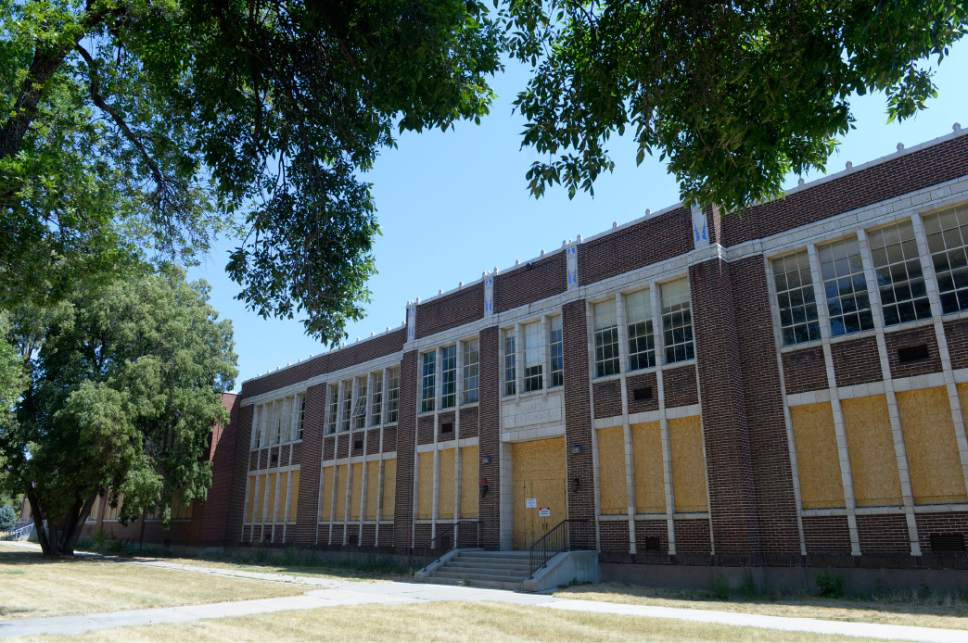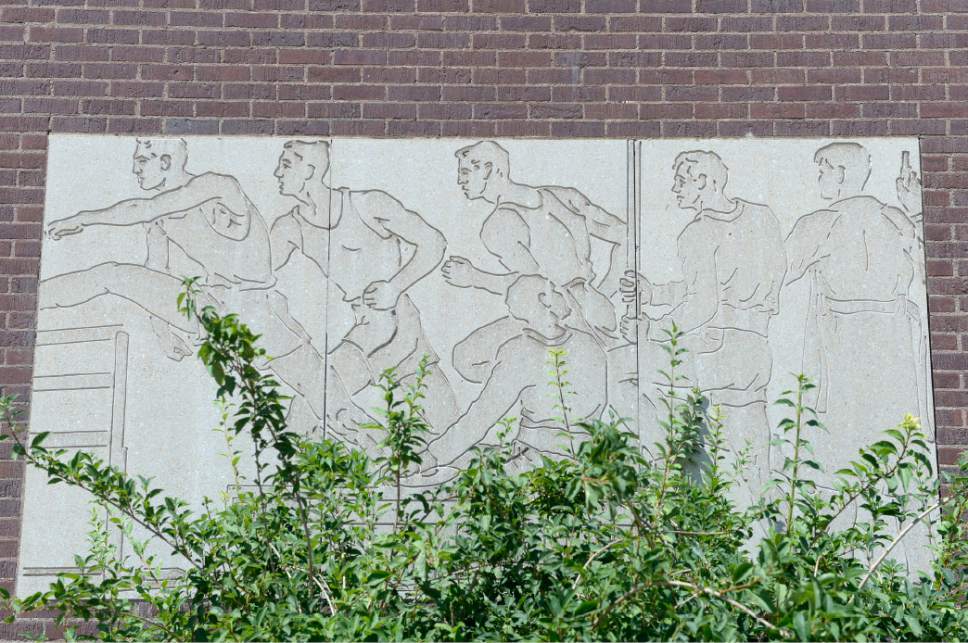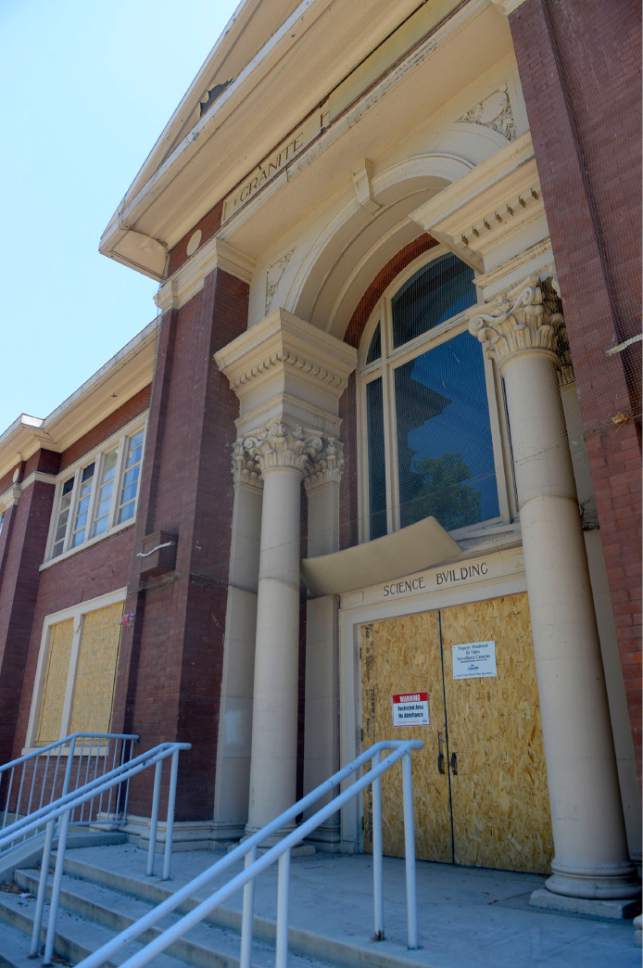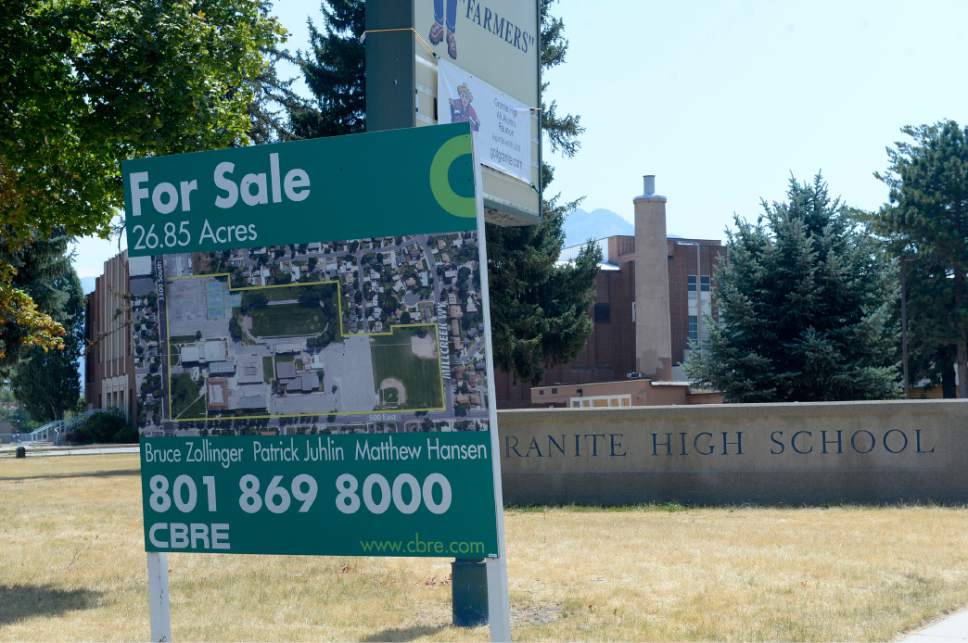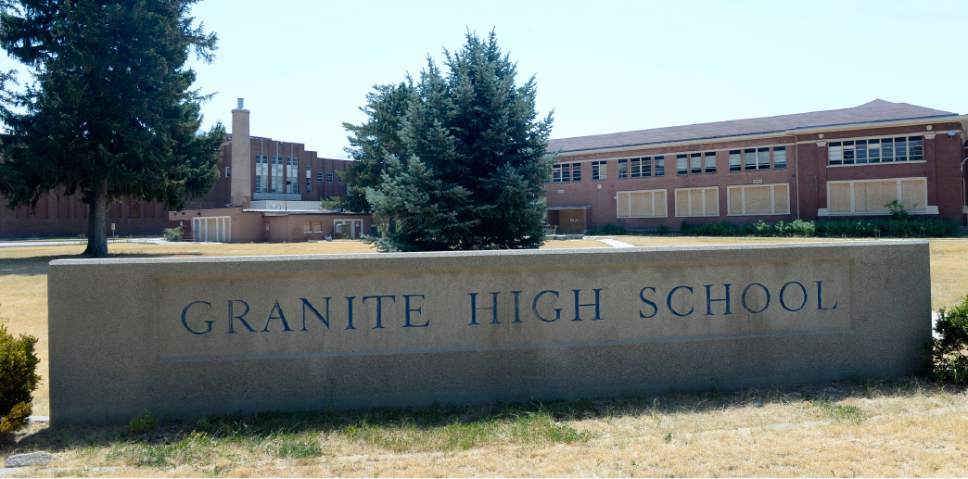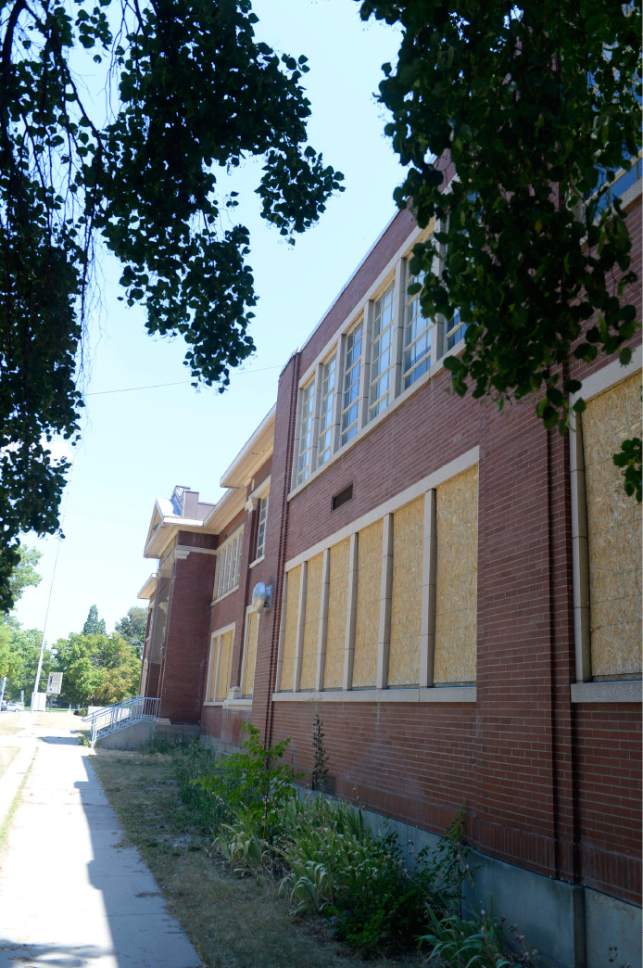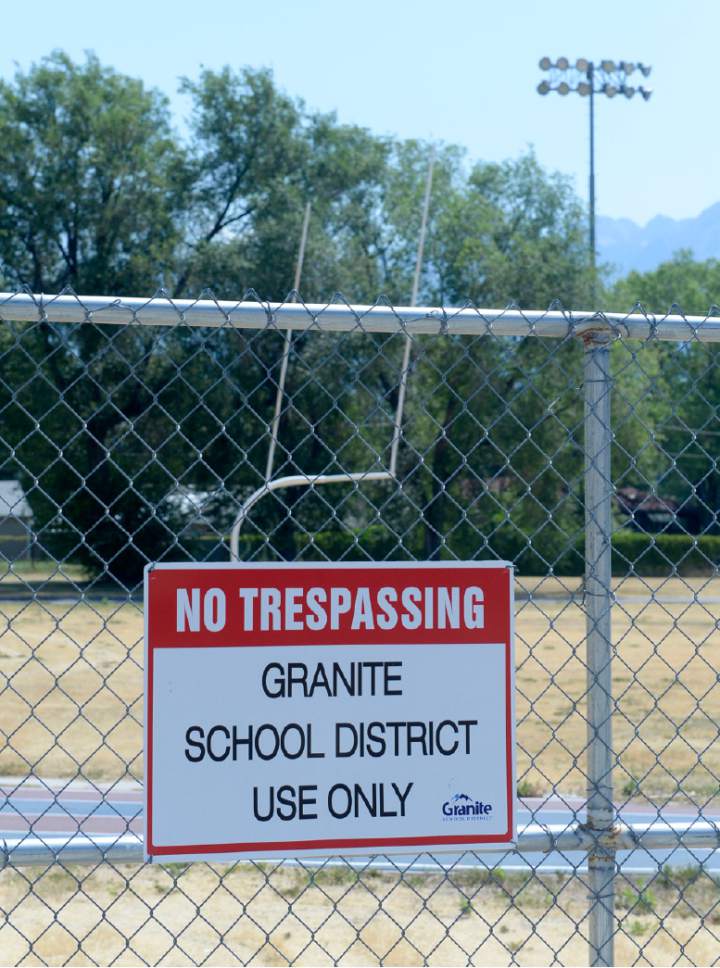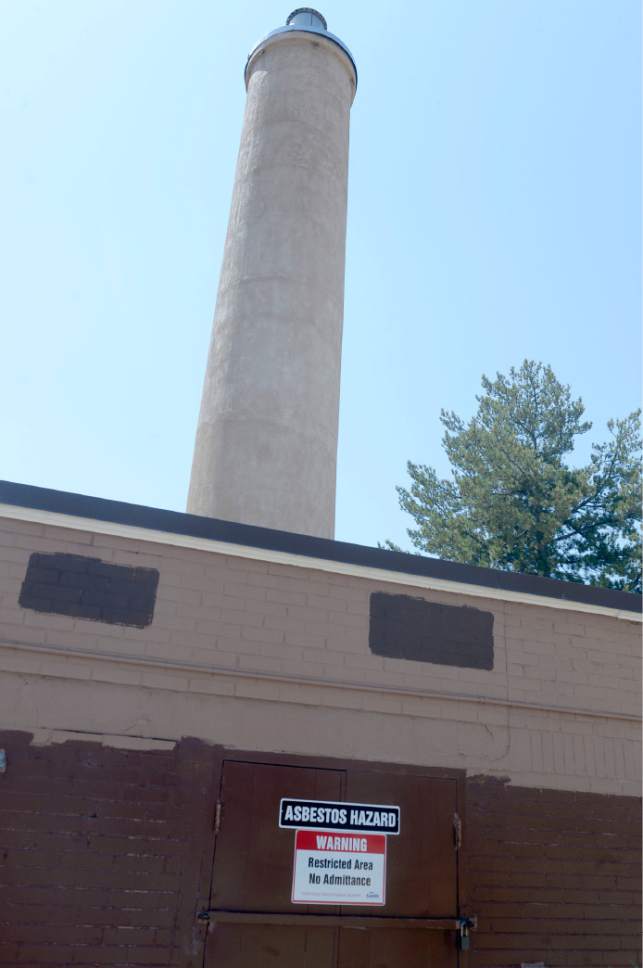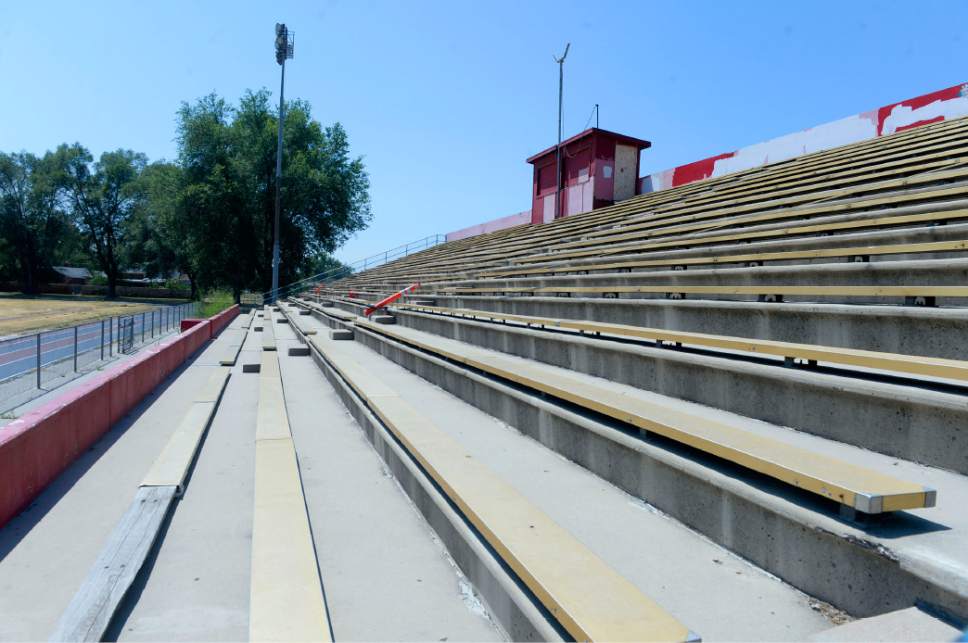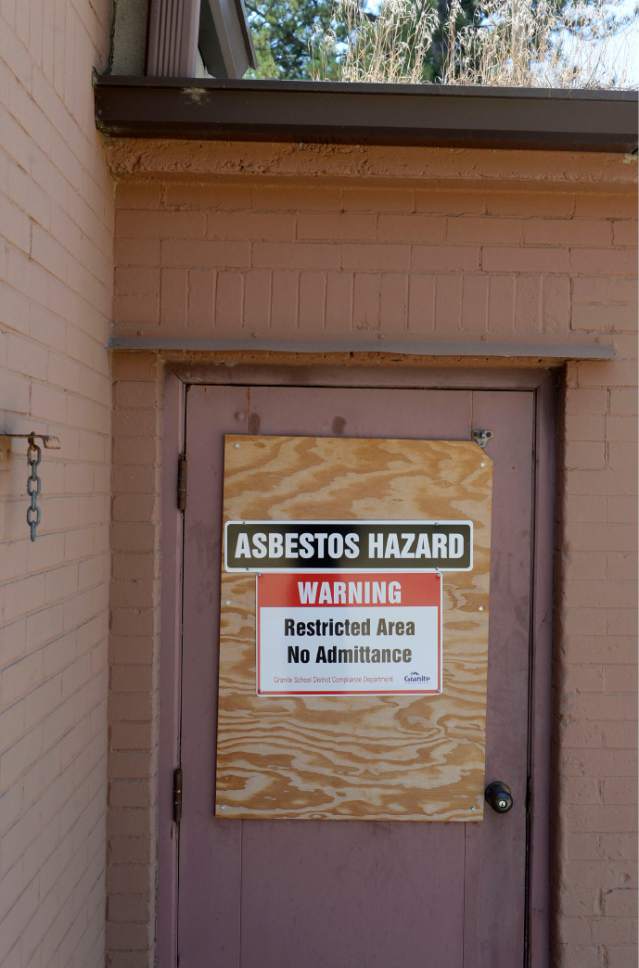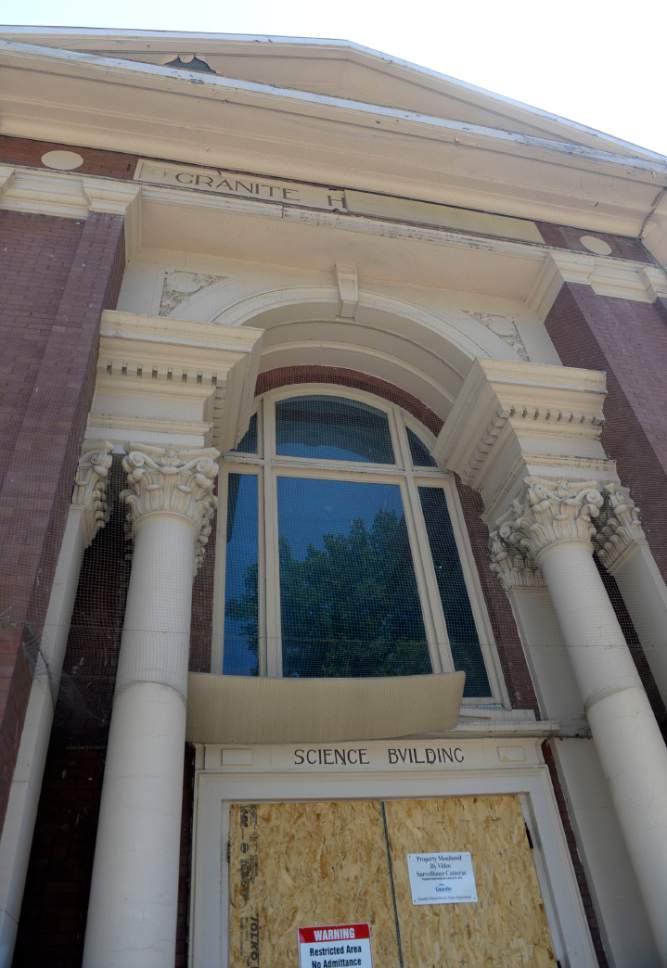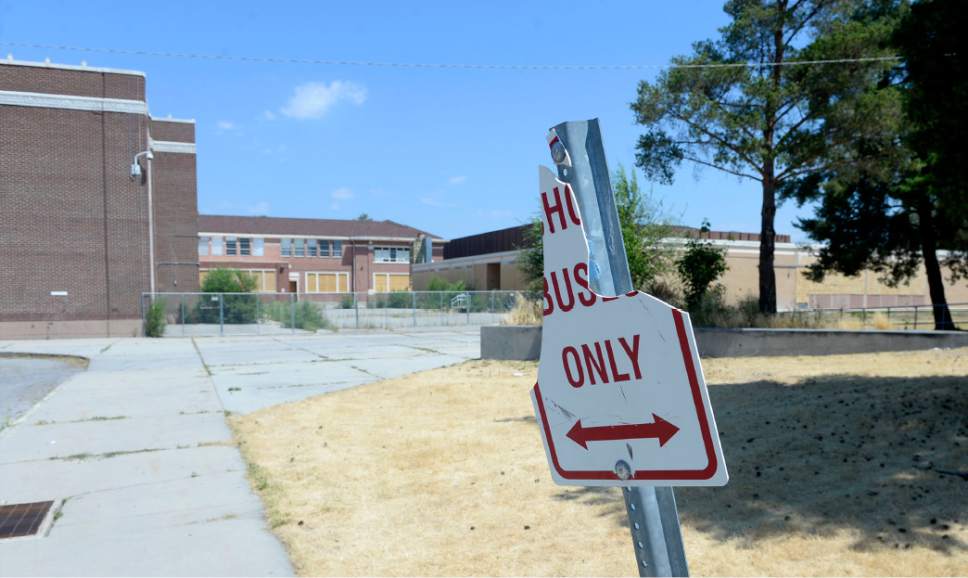This is an archived article that was published on sltrib.com in 2016, and information in the article may be outdated. It is provided only for personal research purposes and may not be reprinted.
South Salt Lake • A prominent developer's deal to buy the old Granite High School property has been extended and a new development plan is in the works.
Garbett Homes and Wasatch Property's previous plan included 78 homes and a retail center anchored by a neighborhood Wal-Mart grocery store and would have put $10.6 million in Granite School District's coffers.
While the residential aspect of the development was never in question — the area is already zoned for housing — the community opposed the location for a Wal-Mart grocery. South Salt Lake Mayor Cherie Wood vetoed the plan, and the City Council, which favored it, couldn't muster the votes to override the mayor.
Many thought that would be the end of the deal.
But, in June, Garbett Homes extended its deal with the school district for six months, negotiating a slightly lower price. Now the developer is working to create a plan that will garner the community's approval, which likely means some form of preservation for the old school.
"We've always been open to [preservation]," said Garbett Home's Jacob Ballstaedt. "We're always interested in trying to figure out ways to preserve history, but preserving the building is difficult. We're trying and we're interested in folks' wishes."
He noted that Garbett's first plan included a legacy park with artifacts selected by the Granite High Alumni Association, and the developers continue to work closely with the association.
The association's Merili Carter attended the school, as did her great-grandmother, grandparents, aunts, uncles and sister. Her interest isn't just personal, though; she explained that Granite High is an important community landmark.
The theater and gym building, for instance, was erected between 1938 and 1939 as part of President Franklin D. Roosevelt's New Deal with funding from the Public Works Administration. The building is in the PWA's architectural style that was seen throughout the country during that era.
Carter discovered this detail while researching old news articles for a book on Granite High that will be distributed at the alumni reunion Saturday.
"When you find out about all that, it's like, 'Oh man, how can they tear that down?'" said Carter.
She would like to preserve the buildings, but realizes that would be difficult. That, she said, is where the Utah Arts Alliance comes in.
The alliance hopes to meet with the developer to discuss purchasing a portion of the land, which would include the auditorium and administration buildings, and possibly the industrial arts building, according to member Kristine Dobson. The funds, she said, would come from donations from the arts community and alumni.
"It has the potential to be a real community hub. It would revitalize that area. It's pretty sad to see what's happening there right now," said Dobson. "I love the historical buildings. I think it's really sad to demolish everything."
The Utah Arts Alliance has met with the mayor but has not yet been able to meet with Garbett Homes. Ballstaedt said the developer will meet with community members once it formulates a new plan.
"We're excited about the development. We have a history in South Salt Lake, and we think the homes can be a great value to the community. We look forward to building something there," said Ballstaedt.
Granite School District pays to maintain the property — an expense that previously was running into hundreds of thousands of dollars a year, according to spokesman Ben Horsley. The district has since cut back "to bare bones minimum to maintain security." District police monitor the boarded-up school, which is equipped with alarms. Still, break-ins occur.
"Our job as a school district is not to maintain parks and rec[reation], but to educate students," said Horsley.
The district tried to work on preservation with the city several times, but the city was never able to allocate the funds to the project because residents voted against two bonds, he said. The district received several offers and ultimately went with the one it believes will win the city's OK while providing the most revenue to devote to education.


